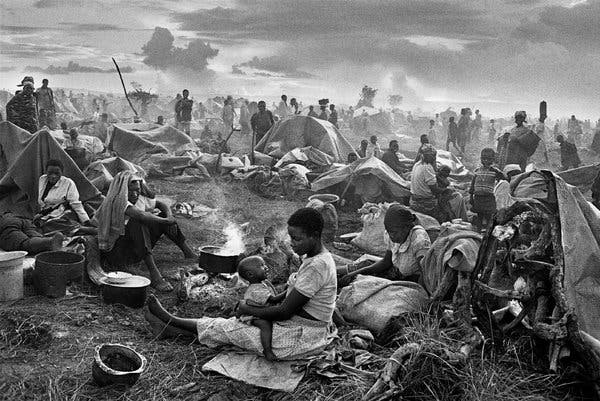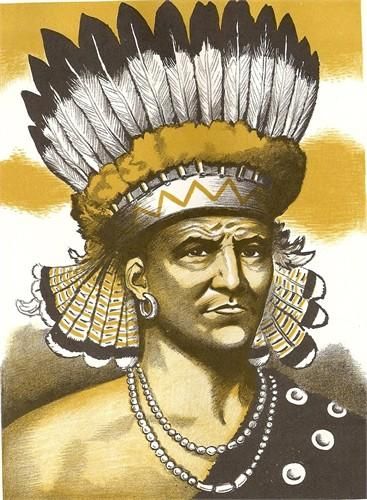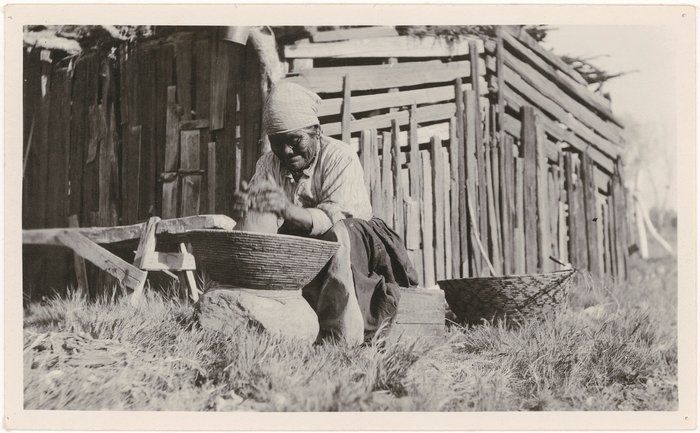Genocide
Looking at the numerous conflicts-military, religious, social, economic, linguistic-between the Native peoples of North America and the invading Europeans, it is not uncommon for writers to describe these conflicts with the word “genocide.” At the same time, there are many who vehemently deny that there was any genocide and feel strongly that genocide is not a concept which should be applied to the conflicts between European nations and Indian nations or between the United States and Indian nations. To look at the possibility of genocide, we must first start with a definition of the concept and then look at the historical evidence.

“Genocide” is a relatively recent word in the English language and emerged during World War II to describe the deliberate destruction of Jews and other peoples by Nazi Germany. In 1948, when the United Nations formally classified genocide as a crime against humanity, genocide was identified as an activity against a national, ethnic, racial, or religious group which includes one or more of the following: (1) killing members of the group, (2) causing serious bodily or mental harm to members of the group, (3) inflicting on the group conditions of life calculated to bring about its physical destruction, (4) imposing measures to prevent births within the group, and (5) forcibly transferring children of the group to another group.
There are some writers who insist that actions against the target group must be intentional: that is, the perpetrators must be shown as actually intending to commit genocide. From the viewpoint of the International Criminal Court, showing intent is critical in proving genocide.
Any cursory survey of American Indian history will uncover a number of examples of genocidal intent. One example of intent can be seen in 1851 when California governor John McDougall told the California legislature:
“That a war of extermination will continue to be waged between the races until the Indian race becomes extinct, must be expected… the inevitable destiny of the race is beyond the power or wisdom of man to avert.”
We see genocidal intent in 1866 in a letter from General Sherman to President Grant:
“We must act with vindictive earnestness against the Sioux, even to their extermination, men, women and children.”
At this same time (1866) a bounty was placed on Indians: the scalp from a man was worth $100; from a woman $50; and from a child $25. Genocide was the clear intent of this action. Following an attack on a friendly Shoshone camp in which 18 Indians, including six women and children, were killed, a letter to the Idaho Statesman said:
“We long to see this vile race exterminated. Every man who kills an Indian is a public benefactor.”
There are also those who feel, some quite strongly, that genocide can be said to occur only when all, or at least most, of the intended victims have been actually killed. Writers who espouse this position will often claim that there was no genocide against American Indians by the United States because American Indians survived. On the other hand, the International Criminal Court has made it clear that genocide has no lower limit: even if only one person was killed, it may still be considered genocide.
In 2012, the U.S. Senate rejected a resolution on American Indian Genocide and Recognition. Republican senators objected to the word “genocide” claiming that since there were still some American Indians left there had been no genocide. The Republican senators, however, had no problem in passing resolutions regarding genocide in other countries where there are survivors of the genocide.
There are also those who insist that genocide can only occur when the state-that is, the United States government in the case of genocide against American Indians-takes deliberate military action to eradicate the target group (i.e. Indians). Unfortunately, the historic records show numerous accounts of military “battles” in which the goal of the United States was the total eradication of American Indians. The expression “nits make lice” was one way of explaining why the military killed women and children (including infants who were not yet walking). “Nits make lice” in reference to Indians reflects a genocidal attitude as well as intent.
According to the United Nations definition of genocide, the forcible removal of children from their homes may also constitute genocide. When Indian children were removed from their homes by the tribal police and by the U.S. army, and then imprisoned in boarding schools where they were not allowed to speak their Native languages, to practice their Native religions, and to wear their Native clothing, this constituted a form of genocide. The idea, as expressed in the motto of America’s premier nineteenth century Indian boarding school, was to “Kill the Indian, Save the Man.” In other words, the purpose of education was to destroy Indian culture.
Another form of this type of cultural genocide involves the adoption of Indian children by non-Indian families. State agencies are particularly prone to declare Native families as “unfit,” then adopt the children out to non-Indian families which will raise them with no reference to their tribal cultures. While the boarding schools no longer function as a genocidal vehicle, adoption, particularly forced adoption, appears to fit this definition.
While the Indian Child Welfare Act (ICWA) is intended to give the tribes a voice in the placement of Indian children into foster homes, the State of South Dakota continues to seize Indian children and place them in non-Indian homes. In 2012, a group of tribal directors of ICWA programs on the Sioux reservations completed a report showing that while Indian children make up on 14% of the children in South Dakota, they make up 50% of the children in the state-run foster care. The state appears to equate “poverty” with “neglect” and thus seizes more Indian children. After a state supreme court upheld the ICWA provisions, the state legislature passed a series of laws making it easier for the state to take Indian children and more difficult for Indian parents to get their children back.
Applying the 1948 United Nations definition of genocide retroactively to the treatment of Native Americans by the American government it appears that genocide has occurred. The United States did not ratify the convention on genocide until 1988, so genocide prior to this would be a moot point legally. Since 1988, the only actions against Native Americans which might be considered genocide center on the adoption of Indian children.


